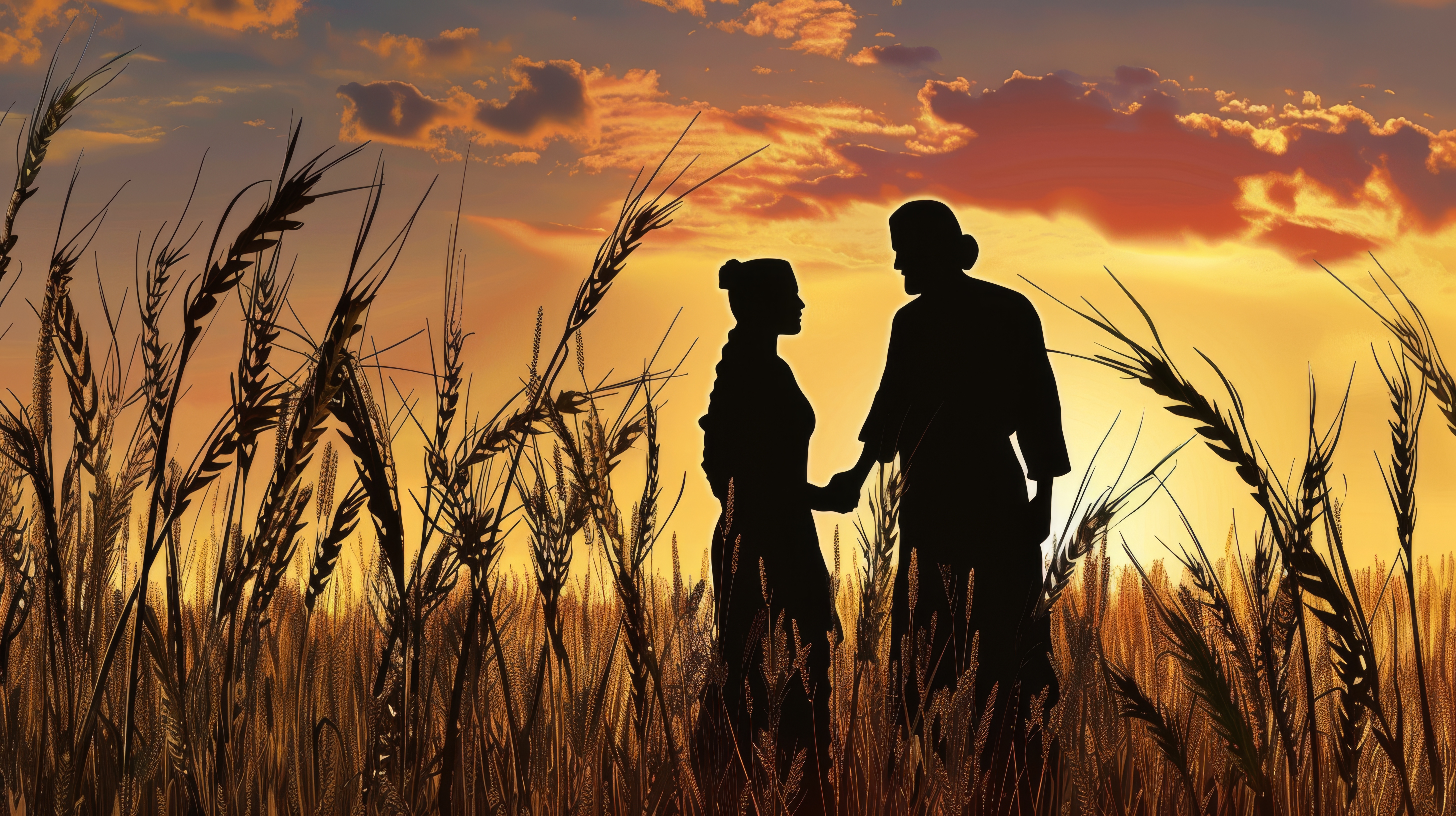
Who Is Jesus? The Resurrection and the Life
Published February 12, 2024
We are continuing our wonderful study of Jesus Christ from the Gospel of John, as we look to answer the question, “Who is Jesus?” from what our Lord said about Himself. In John 6, we saw that Jesus is the bread of life. In John 8-9, we read that Jesus is the light of the world. In John 10, we studied that Jesus is the door of the sheep and that Jesus is the good shepherd. Each one of these pictures Jesus paints complements the others, giving us a full image of who Jesus is, what He has done for us, and what it means for us to believe in Him.
When we look at these four statements Jesus made, we see an ideal picture of the Christian life. Something, though, seems to be missing at this point in our illustration of our Lord and what it means for us to follow Him.
We read in Psalm 23 that the Lord is our shepherd, and we know the first half of the psalm focuses on the shepherd’s care and provision for His sheep. The psalm does not end there, however. The valley of the shadow of death comes as we follow the good shepherd. Having the good shepherd does not mean we avoid that valley, but that Jesus walks through the many challenges, trials, and tribulations of life with us.
That brings us, then, to this important query: How does the Good Shepherd walk with us through the valley of the shadow of death? John 11 speaks to this very question, as the focus on Jesus’ identity now shifts from ‘shepherd’ to ‘resurrection.’ Resurrection presupposes death, because we cannot have resurrection without death.
Jesus makes this statement – I am the resurrection and the life – in the context of the death of His dear friend, Lazarus. Here we see the meaning of Jesus being the resurrection life, and how our good shepherd assists us to navigate and triumph over death itself.
The narrative of Jesus raising Lazarus from the dead takes place in five scenes, helping us understand the Savior as the resurrection and the life.
The opening scene involves Jesus and the disciples.
As we read Jesus’ words and actions in the opening of this narrative, we learn that He is motivated by two factors. First, He is driven by the glory of God. Everything Jesus does tends toward God’s glory. He is most concerned that God be glorified through this circumstance of an illness. Second, He is inspired by love for His people who are in distress and suffering. Jesus is not a god who is indifferent to the plight of others, but He is the living God who loves His people and acts out of love for them.
God always operates in this way toward His people, which is a glorious truth. His motives of displaying His glory and loving us are never at odds. We often do not see how what He is doing either glorifies Him or is a result of His love toward us, just as the peoples’ reactions depicted in the narrative. Nothing about Jesus’ response to Lazarus’ illness makes sense from a human perspective. John wants us to understand that Jesus’ plans often confound us because His goals are much greater than ours. The confusion, though, is never the end of the story!
The second scene focuses on Jesus and Martha.
When Jesus arrives at the location of Lazarus’ death, Martha meets Him, expressing a cry of a believer who is confused, grieving, and trying to process her pain. She knows the Lord is the Lord, but she does not understand the reasoning behind His actions. Jesus tells Martha her brother will rise again. Though Martha believes this truth, she misses something very important, which is the connection between the resurrection at the end and the power of Christ. Martha knows Lazarus will rise again on the last day, but that almost seems to be an impersonal reality, and an event that happens automatically and disconnected from Christ.
Jesus, then, needs to focus her attention – not on resurrection as an event – but on resurrection as a person, namely, Himself. The resurrection is so much more than an event: Jesus is the resurrection. Jesus has the power over life, death, and resurrection from the dead. The only possible way we can understand the resurrection at the end of the age is if we see Jesus as the source of resurrection life. The resurrection to life does not just happen to people. It does not happen because we are good, religious, of a certain ethnicity, or born to specific parents. Individuals only experience resurrection to life at the last day if they hear the voice of Jesus and believe in Him.
The third scene happens between Jesus and Mary.
We see how Jesus responded to Mary: He was deeply troubled, and He wept. The entire scene of death and intense mourning was unsettling to our Lord, producing in Him a gamut of emotions that come with grief, including distress and even indignation. Jesus’ tears indicated He also felt a genuine grief.
Two reasons explain why Jesus was indignant and distressed. First, Jesus is not indifferent to our suffering and sorrow. Just because God ordains suffering, and because Jesus’ plan included the death of Lazarus, does not mean the suffering He and His people experience as the result of death is not real. Jesus saw the effects of sin and the sorrow it brought to His beloved people, and Jesus was indignant about sin’s destruction. Second, Jesus came face to face with His future experience at the cross as He approached Lazarus’ burial place. Jesus beheld the reality of death and the curse of God on humanity, leading John to note for the first of three times in sequence that Jesus was troubled as He stared death in the tomb.
The fourth scene in the narrative involves Jesus and Lazarus.
As Jesus prepares to perform perhaps the greatest miracle of His earthly ministry, the raising of Lazarus from the dead, He says that the people will see the glory of God, which is the most marvelous experience anyone could ever have. Seeing the glory of God is witnessing the destruction of death, the crushing of the curse, the righting of every wrong, the salvation of sinners, the defeat of the devil, and the crowning of the King of kings. The purpose of Lazarus’ suffering and passing was not his death, but it was to give us this most vivid preview of the glory awaiting us when Jesus calls His people to a resurrection of life that culminates in a new creation where we will forever be with our Lord.
Jesus’ resurrection of Lazarus is a portrait of our great salvation. It pictures our past salvation, because just as Lazarus was dead physically, we were dead spiritually and made alive in Christ. It also portrays our future salvation, because one day Jesus is coming back to call all His children to come forth to a resurrection of life, where we will never again be subject to sickness, sin, or death.
The narrative concludes with one final scene between Jesus and the Jews.
There are two responses to the resurrection and the life. Some people believed in Jesus. They heard what He said, they saw what He did, and they concluded that He truly is the Son of God. Others, however, were not convinced, reporting to the Pharisees what Jesus had done – as if raising Lazarus from the dead was a crime. They rejected the resurrection and life to win the approval of the leaders of false religion.
Everyone is confronted with who Jesus is as the resurrection and the life. People either believe that He is the Son of God who came into the world to bring salvation to sinners through faith in His name, or they reject that He is the resurrection and the life and remain a slave to the devil. The question to all men and women is the same that Jesus posed to Martha: “Do you believe this?”
As believers, we know that Christ is the resurrection and the life. This certainty means that even when His plans and purposes confuse us, we know that He loves us, that He is not indifferent to our sorrows, and that He is the source of resurrection life. We have faith that at the cross and in the resurrection, Jesus defeated Satan, demons, sin, and death; and that one day, we will see the glory of God.




0 Comments